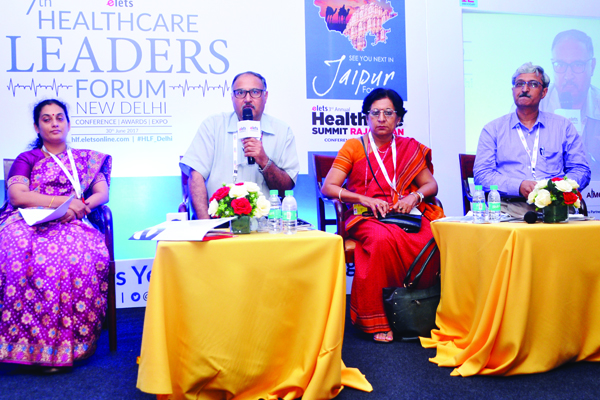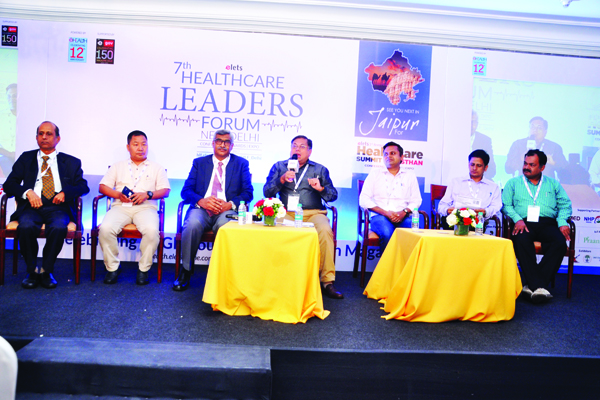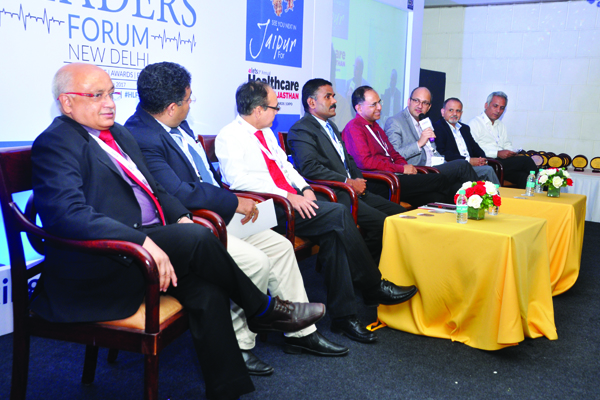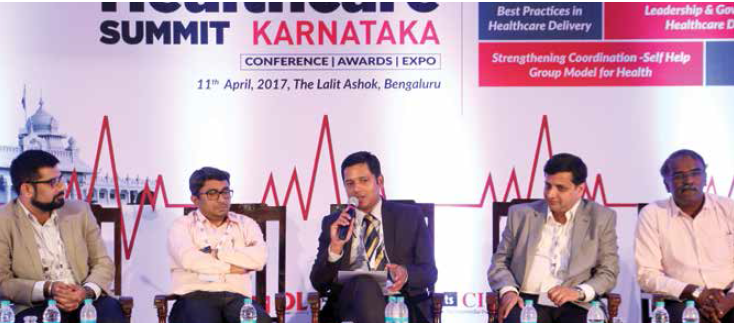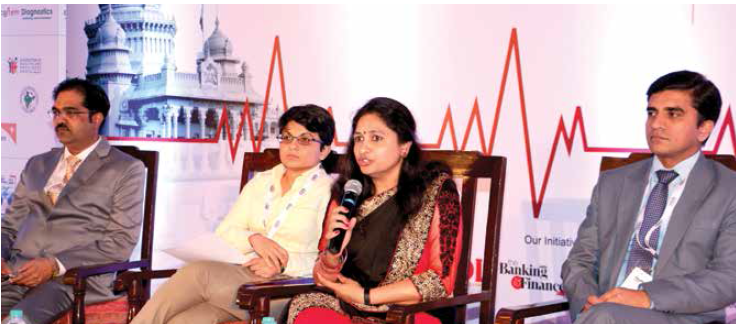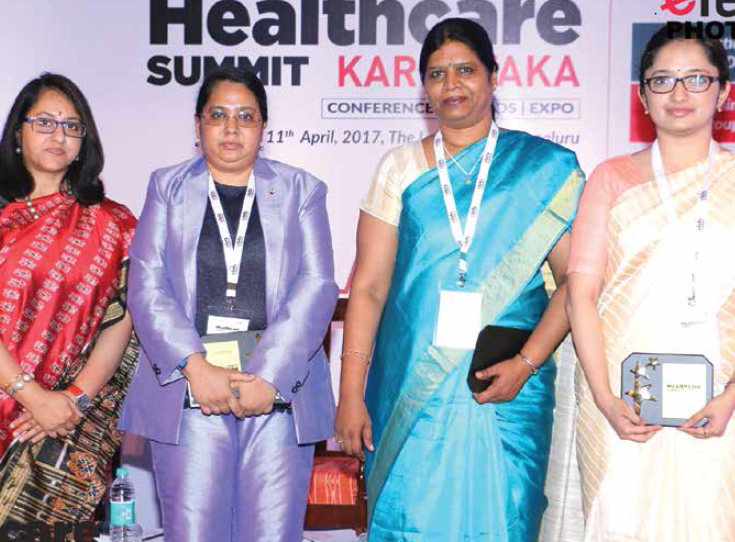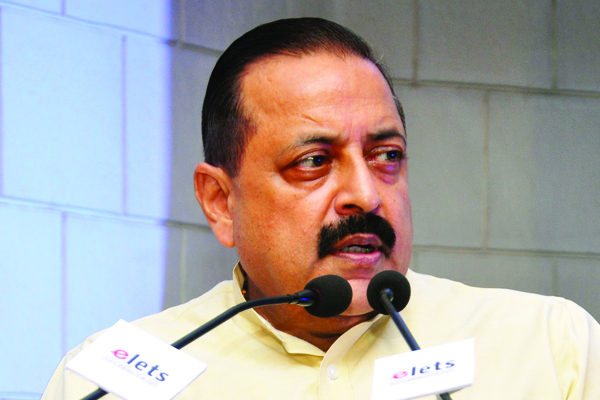
Healthcare for All “ Taking Healthcare Services to the last Mile
 Dr Jitendra Singh
Dr Jitendra Singh
Union Minister of State (Independent Charge) for
Development of North Eastern Region and Minister of State PMO

I think a great challenge before us is that on the one hand we have a huge mushrooming private sector in healthcare and on the other hand one-third of Indias population is still not having access to a decent hospital bed. This is because most of this mushrooming of private hospitals is happening in the cities, urban or semi-urban areas. The private sector has its own constraints as it has to thrive and sustain itself for which they may not find means in semi-urban or rural areas. As a result, the urban patient is overtreated, while the rural patient remains undertreated.
Health is too serious an issue to be left to the government alone. In the context of patients in far-flung areas like in the Northeast India, if you have to make your services meaningful, youll have to reach out to those who have been left out.
 Dr K Rajeshwar Rao
Dr K Rajeshwar Rao
Joint Secretary, Ministry of Health & Family
Welfare, Government of India

In the last two-three years, there is a huge attention and great number of discussions on health sector reforms, culminating into the announcement of the National Health Policy. It has a very unique feature of increasing the budgets for the health, which will be substantial in the coming years and change the growth prospects for the entire health sector.
Involvement of private sector, public private partnership (PPP), research and also the preventive healthcare will be the major focus areas under the new policy. Meanwhile, sustainable development goals of the UN significantly impact the healthcare sector indirectly, and also several states like Karnataka and Uttar Pradesh are developing their separate health strategy based on their needs and strengths. Couple of months back West Bengal also formulated a health policy. So, there is a macro national policy and also several state policies in place.
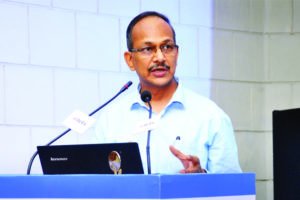 Arun Singhal
Arun Singhal
Joint Secretary, Ministry of Health and Family Welfare
In Westen countries like the UK and Scandinavian countries, nurses and middle level professionals have played an important role in delivering healthcare.
The question Indian healthcare industry faces today is do we need a model where every doctor is a post-graduate or we adopt a model where a family doctor, who is an MBBS, takes care of most of the health problems. The other question we need to ask ourselves is that if we adopt a post-graduate doctor model then should a post graduate doctor be sent to a remote village for screening tuberculosis patients.
Today, a PG doctor is expected to stay and work in an area which is even smaller than the block level. The medical community has to think of what kind of physician assistants, nurse practitioners and other such service providers can be groomed in this country.
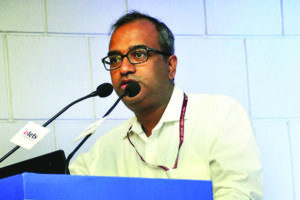 Abhishek Singh
Abhishek Singh
Resident Commissioner, Government of Nagaland
We did a great experiment in Nagaland some time back when we used a commoditisation policy in involving the community for managment of healthcare. What we did was the administrative authority with regard to management of ANMs and sub-centres was delegated to the village health committee which was under the village development boards of village councils, which was the replacement of Panchayati Raj system in Nagaland.
It was found that when the salary of the ANMs and doctors of the primary health centres was paid by the community, their attendance as well as their contribution in managing healthcare at the last mile was much better than when it was managed by the Health Department.
The experiment was done in Nagaland not only in healthcare but also in education and other fields also. It resulted in remarkable improvement and that is the reason why Nagaland is much ahead in national averages of most health parameters.
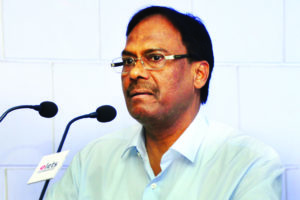 Dr Jagdish Prasad
Dr Jagdish Prasad
Director General (Health Services) Ministry of Health & Family Welfare
Few years ago, our fight against diseases was focused on malaria, filaria, kala azar, dengue and chikungunya, but now noncommunicable diseases are emerging as the leading cause of deaths in the country. Today, 57-58 per cent of deaths are caused by non-communicable diseases like cardiovascular diseases, diabetes, cancers, respiratory diseases and stroke. We tend to ignore the mental health problem in India. But this is leading to economic losses. In India, 7-10 per cent of the people are suffering from mental health issues, which is mostly neglected. The Government of India has passed an Act to take care of this issue. In most of the states like Bihar, Uttar Pradesh, Jharkhand and West Bengal, kala azar will be eliminated by the end of 2017. We will review the status of the disease in August-September. Except in Jharkhand, where it may take one or two months more, kala azar will be eliminated from the entire country.
 Peter Taks¸e-Jensen
Peter Taks¸e-Jensen
Ambassador Extraordinary and Plenipotentiary Royal
Danish Embassy, Denmark
We (Denmark) are a small country with a population of 5.5 million, but we have managed to become a frontrunner in IT-based solutions in healthcare sector. Digitalisation has become a central part of the foundation on which the Dannish health system is based. We continue to develop new ways of optimising and innovating healthcare solutions by the use of ICT.
We have a tax-funded healthcare system. We spend about 9-10 per cent of our GDP on healthcare. This means that all the citizens have universal and free access to healthcare services in Denmark.
But like many other Western countries, we are faced with financial pressure on our healthcare system. This is the consequence of an increasingly aging population also an increase in the overall dependency ratio. As the number of elders is increasing, healthcare expenditure is also increasing proportionally but the funding is staying the same or going down.
Faced with this challenge, the Dannish healthcare sector, policy makers, researchers and other relevant stakeholders have been forced to rethink and innovate and here ICT solutions and digitalisation have really played a key role.
While national challenges have incentivise the implementation of ICT in Denmark and healthcare sector, the ICT infrastructure and framework have been an important driver in the process of developing and implementing ICT solutions.
Be a part of Elets Collaborative Initiatives. Join Us for Upcoming Events and explore business opportunities. Like us on Facebook , connect with us on LinkedIn and follow us on Twitter , Instagram.




